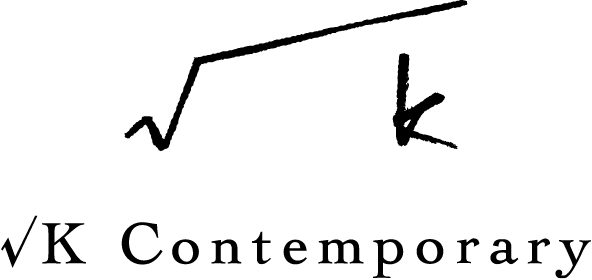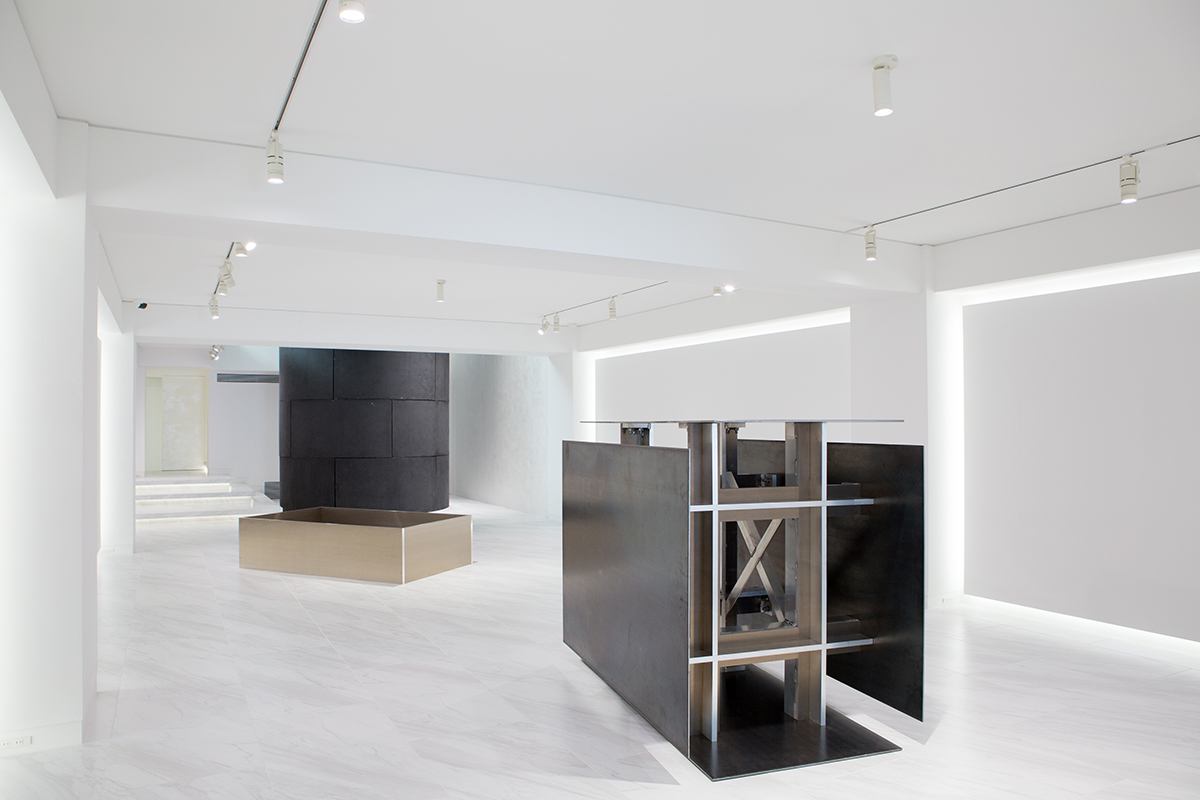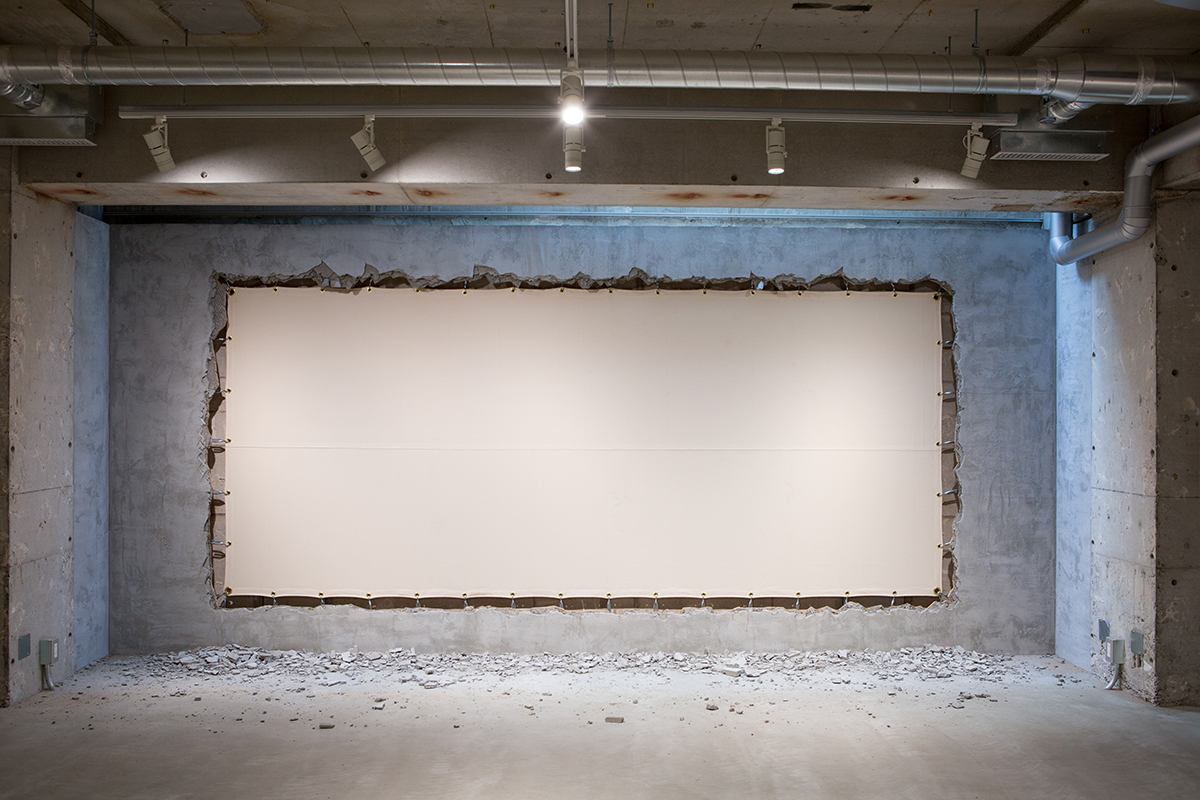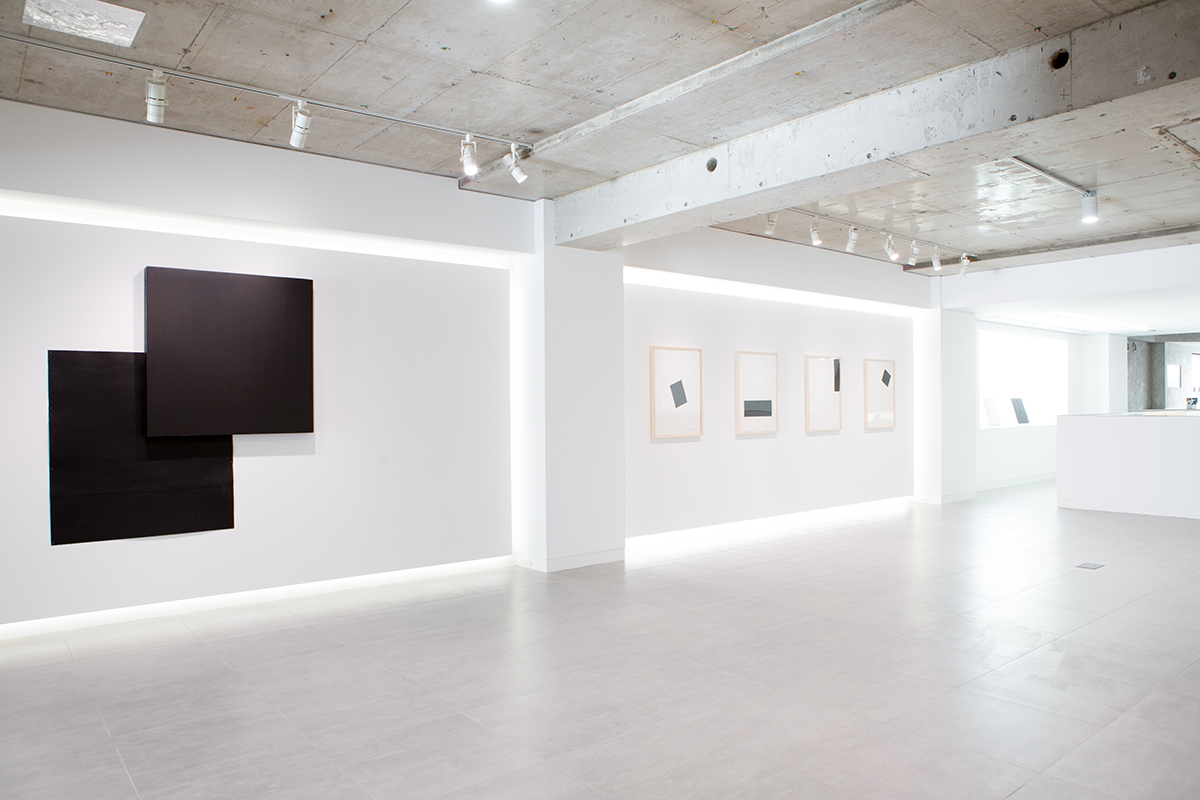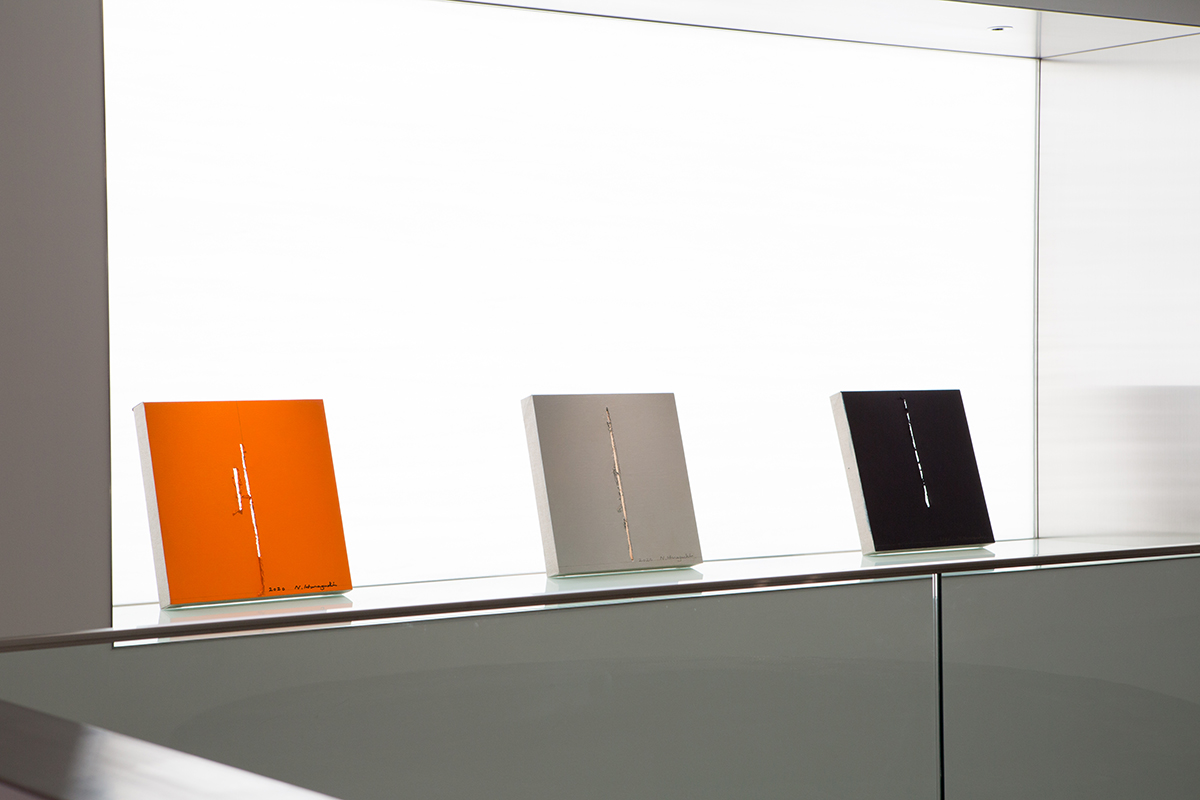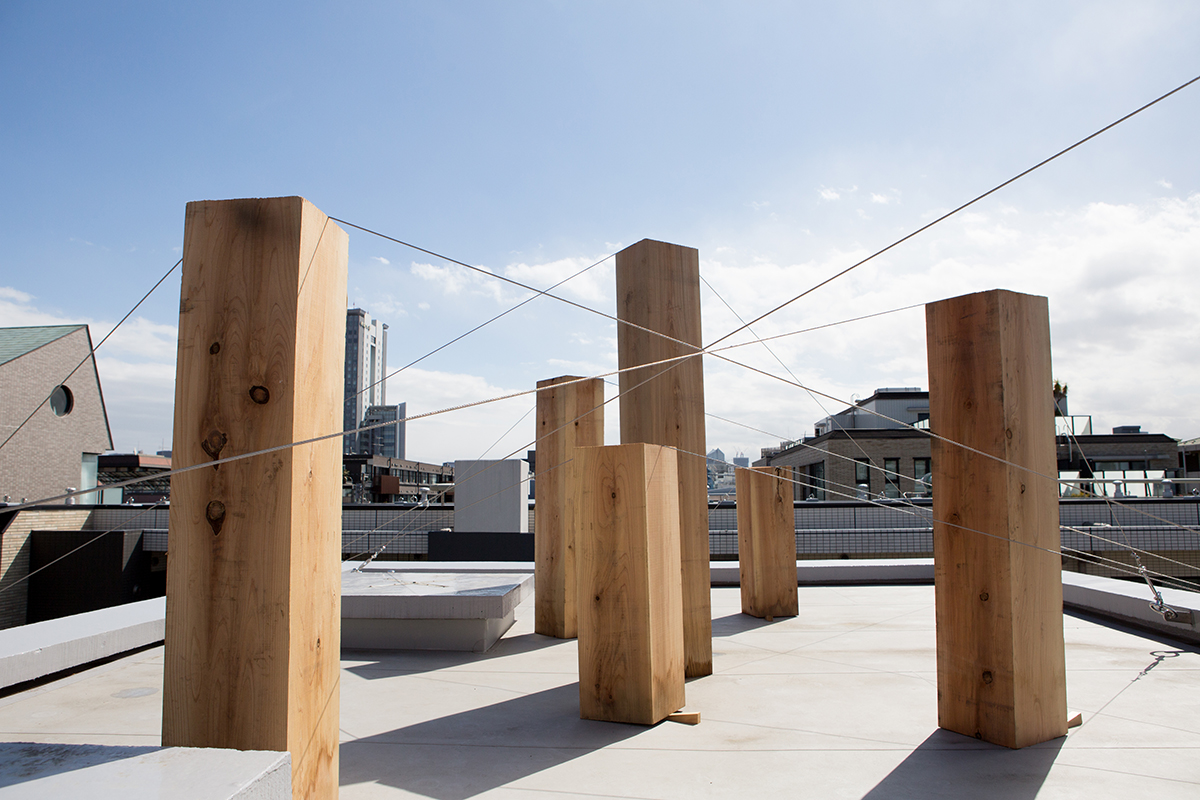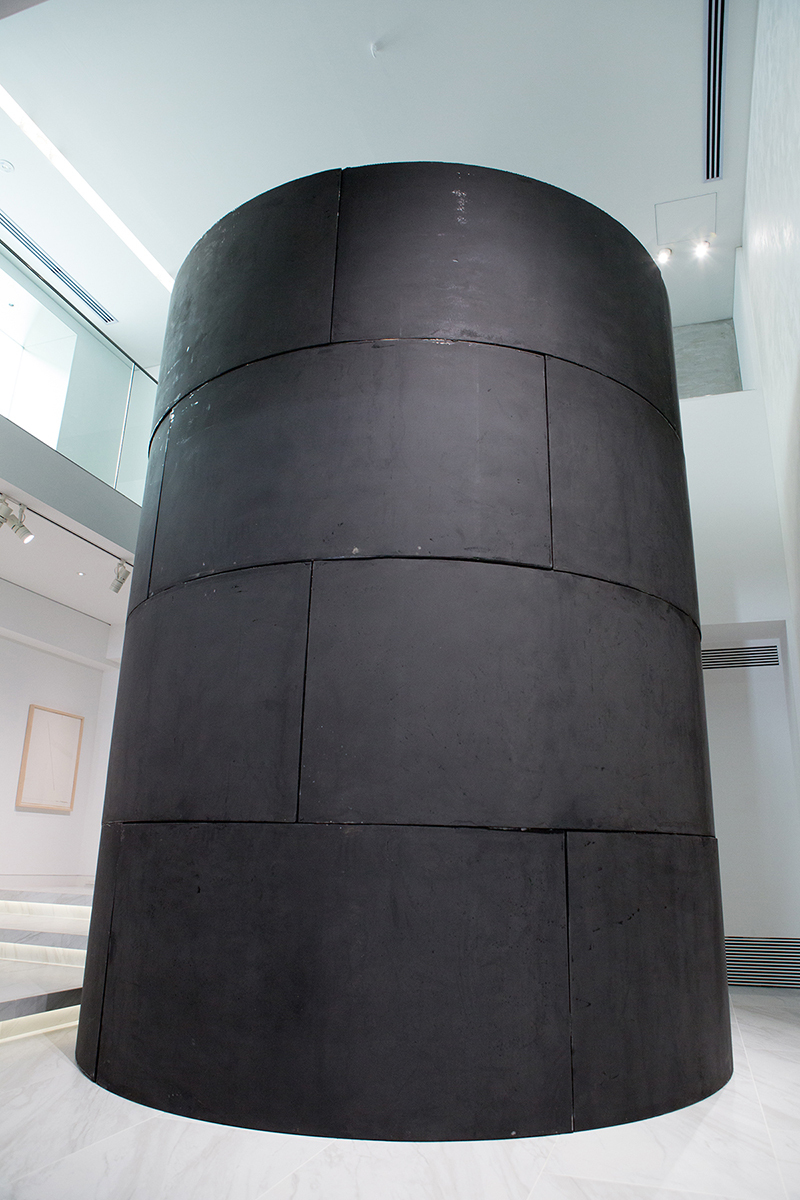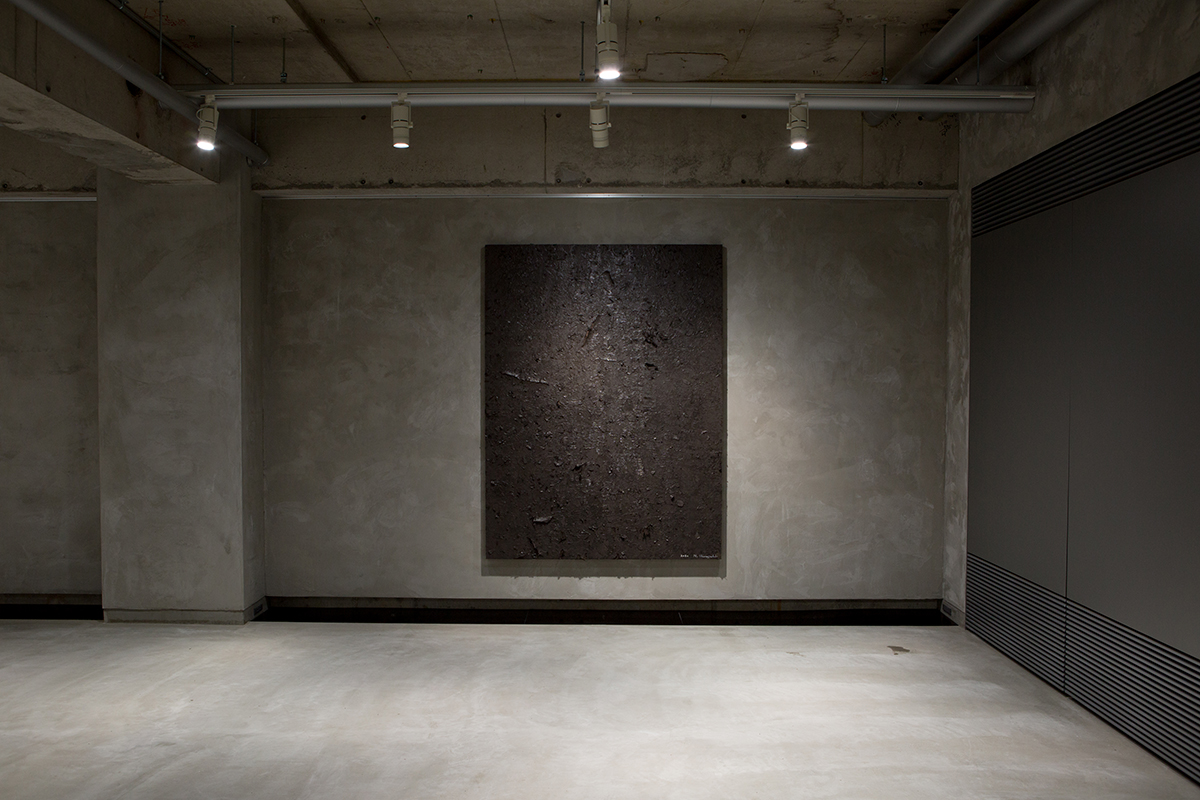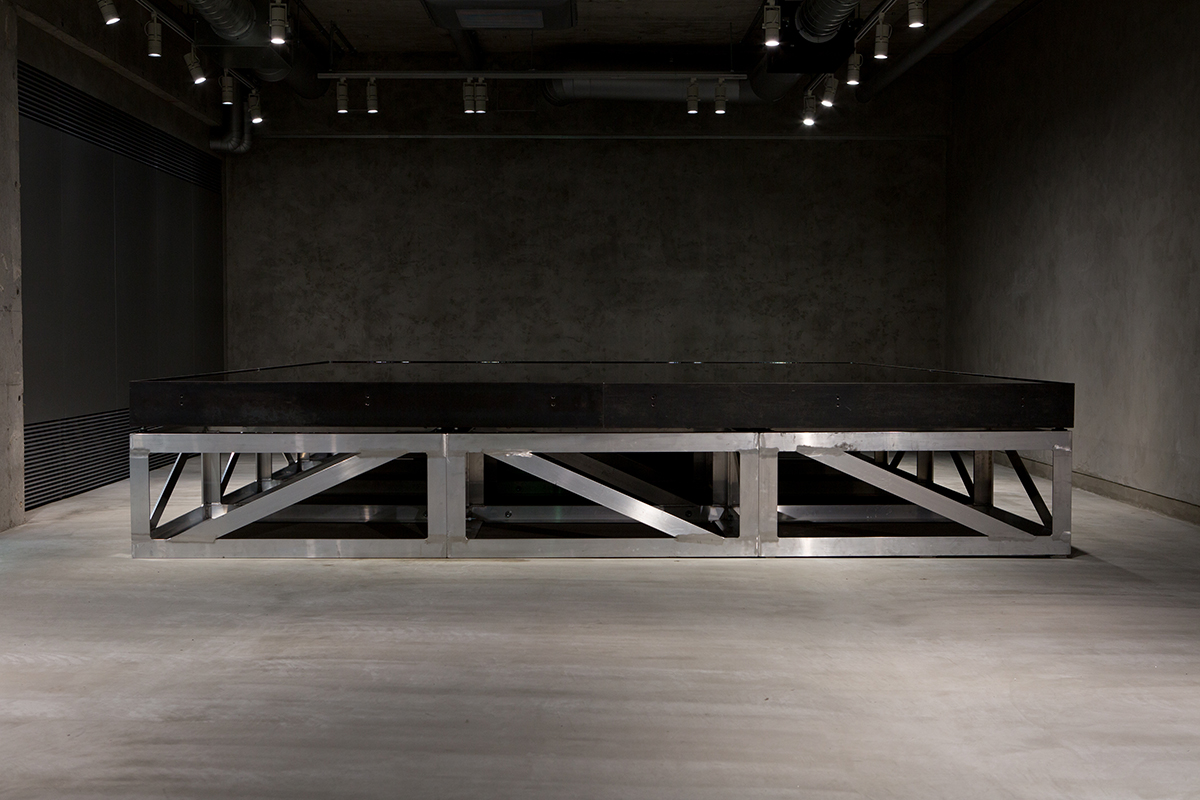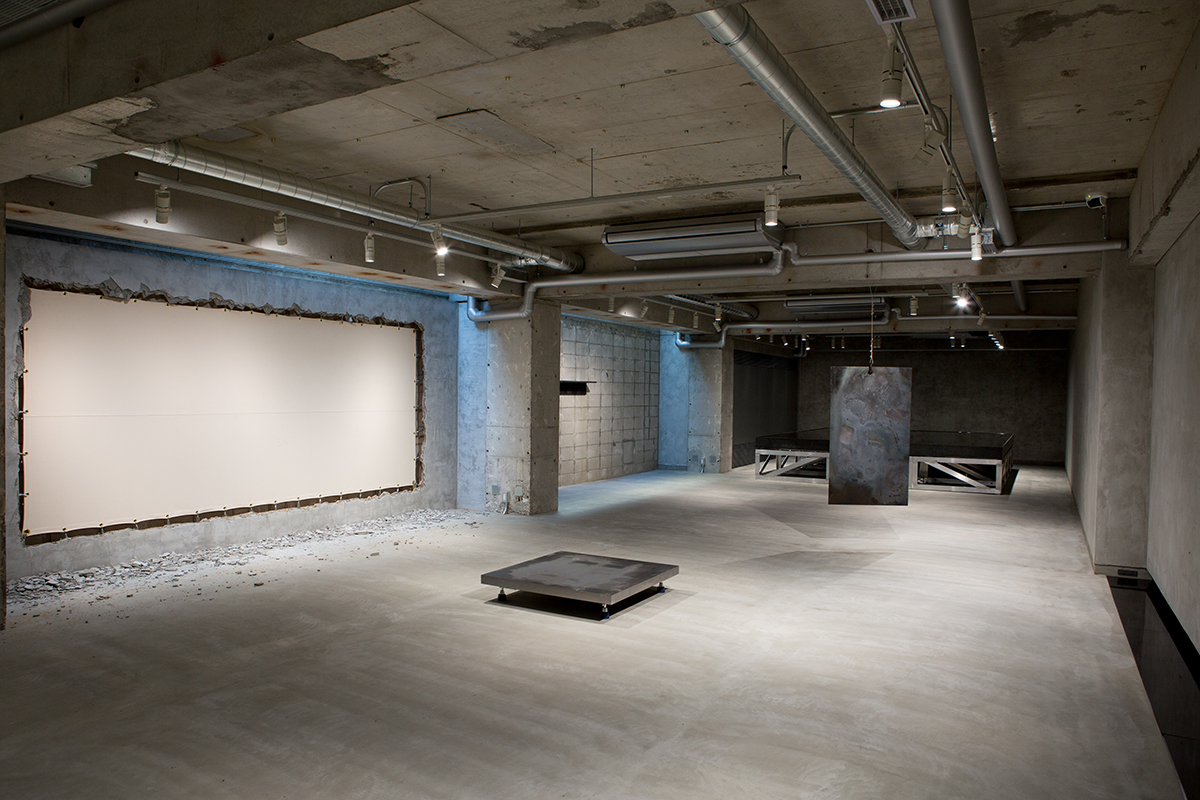

Noriyuki Haraguchi, wall to wall Noriyuki Haraguchi
Venue:√K Contemporary (6 Minamicho, Shinjuku-ku, Tokyo)
Dates:7th of March – 23rd of May, 2020 (Closed on Sundays and Mondays.
Opening Hours :11:00~19:00
Artist:Noriyuki Haraguchi
Works:Approx. 30 works, including the iconic Oil Pool.
√K Contemporary’s inaugural exhibition, “wall to wall Noriyuki Haraguchi”, debuts works by Noriyuki Haraguchi, a leading figure in contemporary art. Featuring approximately 30 works, including Haraguchi’s iconic and highly acclaimed Oil Pool.
Starting his career in the 1960s, Harguchi was quickly recognized as one of the leading figures of the Mono-ha movement. The artist famously became one of the first Japanese artists to be selected for the international 1977 exhibition “Documenta 6” (Kassel, Germany). It was on this occasion that Haraguchi presented his emblematic and influential Oil Pool. Haraguchi has since participated in numerous exhibitions and projects worldwide, and his works have been collected by highly regarded institutions, such as the Tate Modern and MoMA.
For the past fifty years, Haraguchi has continued to create three-dimensional works and installations from industrial materials such as iron, oil, honeycomb, and polyurethane, sustaining an essence of substance and “materiality”. In addition to the signature Oil Pool, “wall to wall Noriyuki Haraguchi” will feature Ento (Round Tower), a large-scale installation piece made of polyurethane and plywood, which traverses from the atrium and stairwell of the first and second floor, as well as a title piece, wall to wall, a site-specific work of stretched canvas strung across a collapsed mortar wall.
With the hopes of establishing a new space for art, the exhibition honors √K Contemporary’s first step towards innovation.
IMAGES
ARTISTS
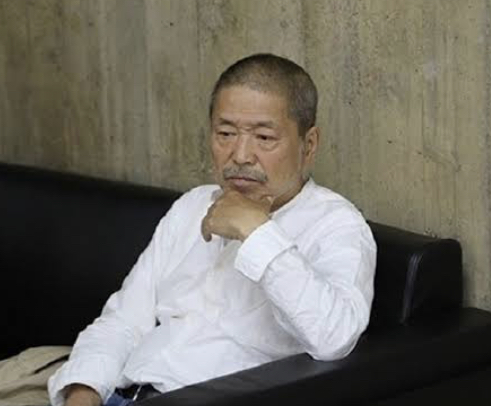
Born 1946, in the Kanagawa Prefecture. Graduated from Nihon University College of Art in 1970. Beginning his career as an artist in the late 1960s, he became the first Japanese artist to be selected for the international exhibition, “Documenta 6” (Kassel, Germany) in 1977. From a full scale, three-dimensional reproduction of a military aircraft to a steel pool containing oil waste, Haraguchi uses industrial materials, such as iron and polyurethane, to create works that reflect Objecthood, the depiction of an object’s materiality via the removal of meaning and function.
Major solo exhibitions include “NORIYUKI HARAGUCHI” (Stätdtische Galerie im Lenbachhaus, Munich, 2001) and “Noriyuki Haraguchi- Society and Material” (BankARTStudio NYK, Yokohama, 2009). Group exhibitions include, “(C) Overt: A Series of Exhibitions” (PS1, New York, 1988), “Color and/or Monochrome – A Perspective on Contemporary Art,” (National Museum of Modern Art, Tokyo, 1989), and “Matter and Perception 1970, Mono-ha and the Search for Fundamentals” (The Museum of Fine Arts, Gifu, 1995), “GRAVITY – Axis of Contemporary Art” (The National Museum of Art, Osaka 1997), “Tokyo 1955-1970: A New Avant-Garde“ (MoMA, New York, 2012), and many more.

Born 1946, in the Kanagawa Prefecture. Graduated from Nihon University College of Art in 1970. Beginning his career as an artist in the late 1960s, he became the first Japanese artist to be selected for the international exhibition, “Documenta 6” (Kassel, Germany) in 1977. From a full scale, three-dimensional reproduction of a military aircraft to a steel pool containing oil waste, Haraguchi uses industrial materials, such as iron and polyurethane, to create works that reflect Objecthood, the depiction of an object’s materiality via the removal of meaning and function.
Major solo exhibitions include “NORIYUKI HARAGUCHI” (Stätdtische Galerie im Lenbachhaus, Munich, 2001) and “Noriyuki Haraguchi- Society and Material” (BankARTStudio NYK, Yokohama, 2009). Group exhibitions include, “(C) Overt: A Series of Exhibitions” (PS1, New York, 1988), “Color and/or Monochrome – A Perspective on Contemporary Art,” (National Museum of Modern Art, Tokyo, 1989), and “Matter and Perception 1970, Mono-ha and the Search for Fundamentals” (The Museum of Fine Arts, Gifu, 1995), “GRAVITY – Axis of Contemporary Art” (The National Museum of Art, Osaka 1997), “Tokyo 1955-1970: A New Avant-Garde“ (MoMA, New York, 2012), and many more.
